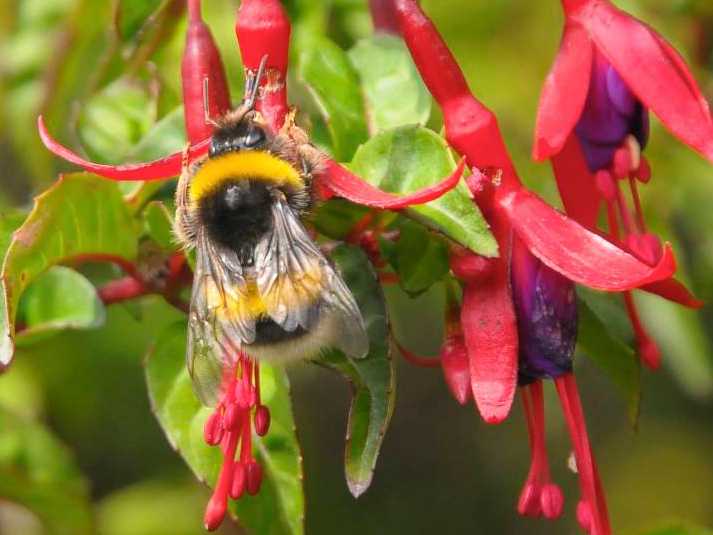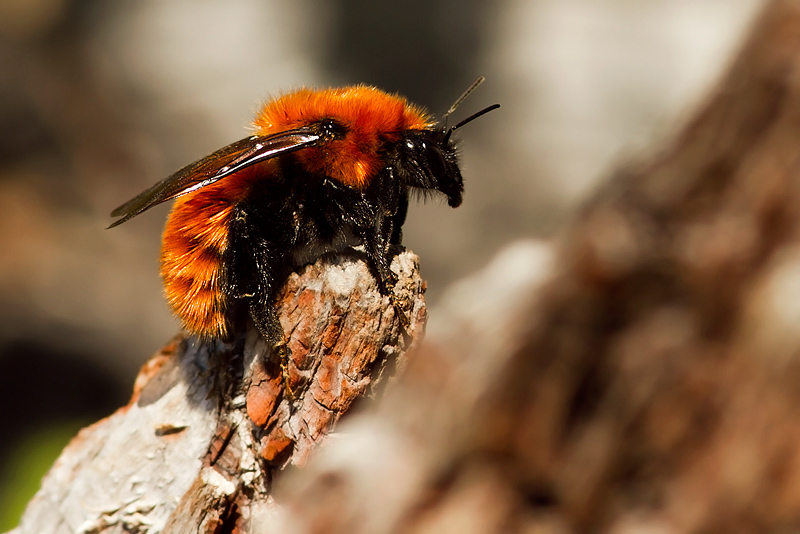Peaceful bumblebee becomes invasive
European bumblebees were introduced in Chile as pollinators. However, these socially living insects have since spread across the southern part of South America. Very much to the detriment of native species.

Bumblebees look cute. They have a thick fur, fly somewhat clumsily and are less aggressive than honeybees or wasps. They are very much appreciated by farmers as keen pollen collectors. Particularly in the context of the crisis-stricken honeybee populations, the buff-tailed bumblebee, Bombus terrestris, is being bred on an industrial scale for the pollination of fruit and vegetable crops both inside and outside greenhouses.
It was hoped that these insects would take over these important services when they were first introduced into central Chile, in southern South America, in 1998 as pollinators in a few greenhouses, with the backing and approval of the state authorities. But in the greenhouse, they did not stay. Some individuals escaped and very soon they established colonies in the wild. But that was not all. The buff-tailed bumblebee turned out to be an extremely invasive insect that embarked on an unparalleled victory tour that took it as far as Patagonia. As an aside, the first European bumblebee species, Bombus ruderatus, was introduced back in 1982 but it turned out to be relatively harmless in comparison.
Extremely invasive
“This is one of the most spectacular examples of the invasion of an entire continent by a foreign species introduced by man”, says Paul Schmid-Hempel, retired Professor of Experimental Ecology at ETH Zurich. He has been monitoring the spread of buff-tailed bumblebees over the last ten years. Together with this wife Regula and his colleagues from South America he has just published his work in "Journal of Animal Ecology". The couple collected these insects during several trips to southern South America in order to document their rapid spread, do genetic analyses and examine the parasites which accompany them as stowaways in the bumblebee intestines.
The findings show that the European buff-tailed bumblebee spread southwards from central Chile along the Andes at a rate of around 200 kilometres a year – faster than the ecologists would ever have expected. After just a few years the buff-tailed bumblebee had crossed the mountain chain and it reached the Atlantic coast of Argentina in late 2011. By 2012 the insect had already penetrated deep into south Patagonia reaching the gateways to some of the major national parks. “Given that colonies and not individual insects have to become established, this migration speed is astonishingly fast”, says Paul Schmid-Hempel. He is convinced that in just a few years’ time the bumblebees will reach the Strait of Magellan. From there it would be just a little leap to Tierra del Fuego. “Unfortunately, we don’t have any information at all about the occurrence of bumblebees on this large island”, comments the researcher. In the other poorly accessible areas in Southwestern Chile no-one has looked for buff-tailed bumblebees either. That’s why we don’t have any evidence up to now. As, however, there are often strong winds in Patagonia in the summer, Schmid-Hempel believes that it is possible that the insects could be transported easily to many locations.
Native species are disappearing

The triumphant advance of the European bumblebee is a disaster for the native bumblebees – five out of a total of 250 bumblebee species to be found in the world live in southern South America – and a disaster particularly for the attractive and vivid orange giant bumblebee Bombus dahlbomii. Wherever the buff-tailed bumblebee settles, the native species are done for: in most areas in which its competitor has appeared, B. dahlbomii has disappeared surprisingly quickly.
One possible reason for its extinction is the protozoan parasite, Crithidia bombi, which lives in the intestines of the buff-tailed bumblebee. This parasite causes intestinal infections in the European and native bumblebee species in South America. It modifies the behaviour of the workers, increases their mortality rate and prevents the establishment of new colonies.
Paul Schmid-Hempel is worried about the rapid spread of the buff-tailed bumblebee in remote areas of southern South America not least because nothing seems capable of stopping it. The species is now established and it would be almost impossible to remove it from the ecosystem. The consequences for the native fauna and flora are, however, difficult to assess. “The European bumblebee could disrupt the ecological balance of southern South America to a major degree. Nor is it stopping either at the boundaries of famous nature reserves like Torres del Paine and other magnificent landscapes”, stresses the ecologist.
Reference
Schmid-Hempel R et al. The invasion of southern South America by imported bumblebees and associated parasites. Journal of Animal Ecology. Published online 21th November 2013. DOI: external page10.1111/1365-2656.12185call_made

